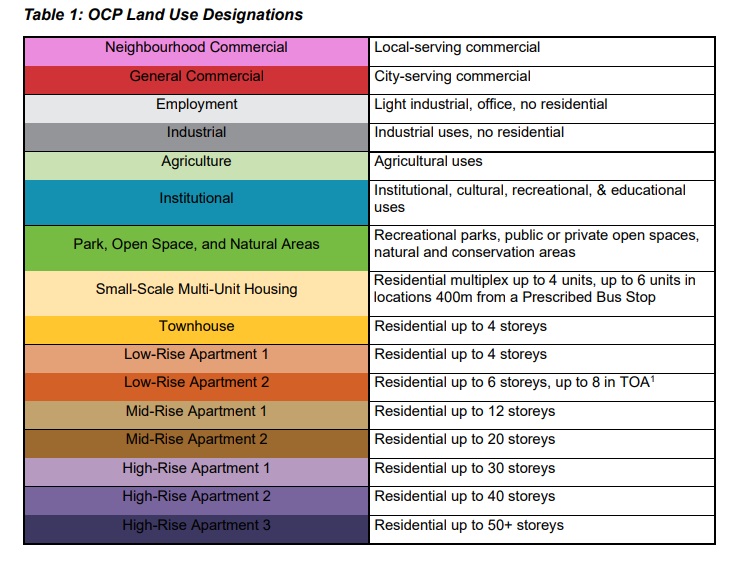City of Burnaby Provides OCP Update and Hints at Changes to Zoning Approach
City of Burnaby council will meet next week to review a report regarding the City’s OCP that outlines a Draft Land Use Framework for the entire City.
The City had been working on an update to the OCP entitled ‘Burnaby 2050’, since 2022. This is the first time that a draft land use document has been presented to the public showing potential land use for every lot.
The City is also working on a new Zoning Bylaw that will introduce a new “height-based development framework” in which land use designations are based on height (measured in storeys) as opposed to density and Floor Space Ratio (FSR). Details of the new Zoning Bylaw have not yet been released.
Burnaby 2050 Draft Land Use Map: (click here to see detail in pdf)
The new Official Community Plan Land Use Framework, and the corresponding Zoning Bylaw Districts are proposed to have seven (7) non-residential designations and nine (9) residential designations, each with a corresponding colour:

The full map can be viewed here: https://pub-burnaby.escribemeetings.com/filestream.ashx?DocumentId=76735
The updated draft land use plan accommodates the most recent TOA legislation (which was tabled by Burnaby council for 90 days) as well as upcoming Royal Oak and Edmonds Area Plans.
In addition to the land use designations, the City will be implementing a series of “Policy Overlays” to certain areas, blocks and lots. Examples of proposed Policy Overlays include: Rental Tenure, Streamside Development Permit Areas, Statutory Rights-of-Way, and Special Study Areas.
Community Benefit Density Bonus
The City has also outlined a new, modified density bonus program:
- The OCP land use designations describe intended heights of buildings; however, a parcel may be eligible for additional height, beyond what is considered “additional supported height”, in exchange for provision of an on-site amenity or cash-in-lieu of an on-site amenity (“Community Benefit Density Bonus”), so long as it does not exceed the permitted height of the next most permissive land use category (if there is one).
- Density bonusing opportunities are identified for the High-Rise Apartment 1, 2, and 3 designations, and may be considered in the Low-Rise 1, Low-Rise 2, Midrise 1, and Midrise 2 designations subject to City policy and bylaws.
- Similar to the “additional supported height” scenarios, for residentially designated properties, additional height may be supportable so long as it does not exceed the permitted height of the next most permissive land use category (if there is one).
The draft land use map will be brought forward for public engagement in September 2024, with a report back to Council in late 2024 and an expectation of a final version in early 2025.

